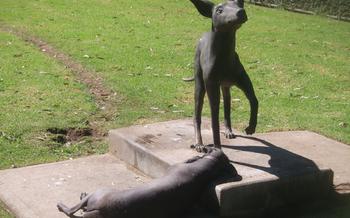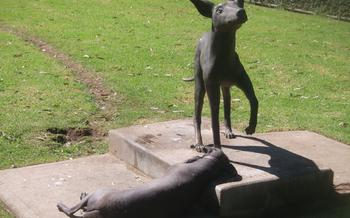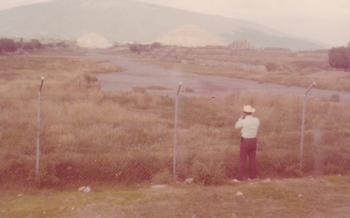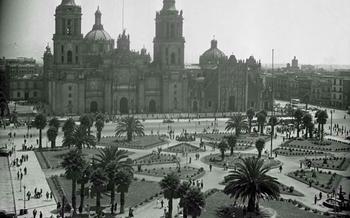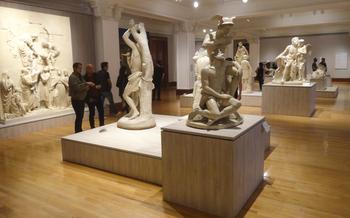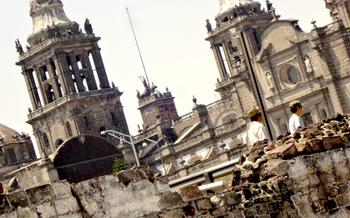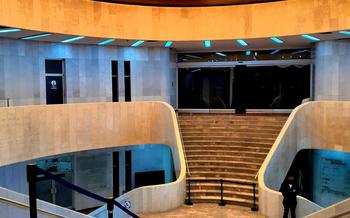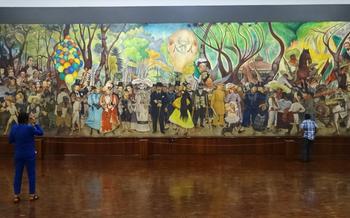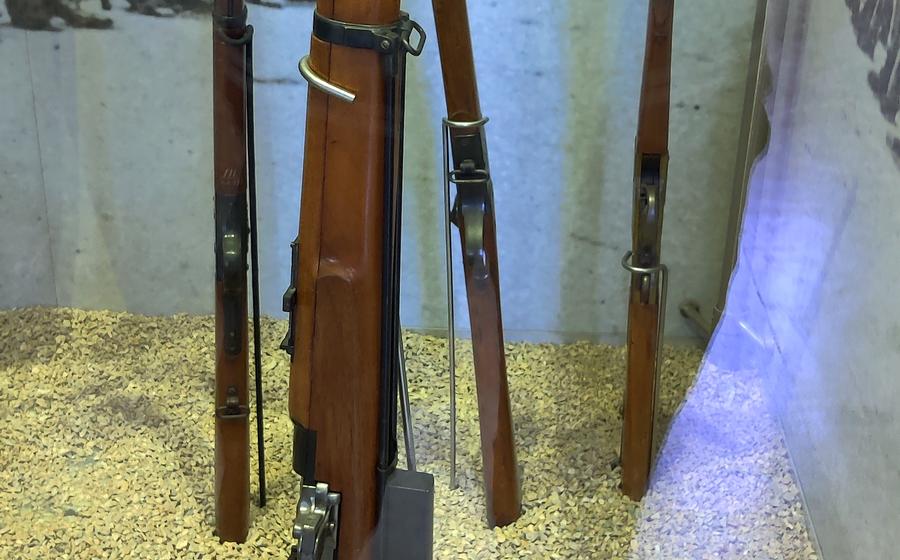
Museo Nacional de Historia
- Location and Accessibility
- Exploring the Museum's Highlights
- Pre-Columbian Civilizations:
- Mural Masterpieces:
- Interactive Exhibits
- Temporary Exhibitions
- Accessibility for Differently-Abled Visitors:
- Museum Shop and Dining Options:
- Photography and Social Media
- Events and Festivals: A Vibrant Celebration of Mexican Culture
Location and Accessibility
The Museo Nacional de Historia is located in the historic center of Mexico City, easily accessible by various transportation options. Its address is Plaza de
To get to the museum by public transportation, take the metro to the Hidalgo station on Line 2 or the Bellas Artes station on Line From there, it's a short walk to the museum. Alternatively, you can take a bus or taxi to the museum's location.
For those driving, there are several parking options nearby, including public parking lots and street parking. However, it's important to note that parking can be limited, especially during peak hours.
The Museo Nacional de Historia is committed to accessibility for all visitors. The museum is wheelchair accessible throughout, with ramps and elevators providing access to all floors. Additionally, sign language interpreters are available for guided tours, and audio guides with descriptions are provided for visually impaired visitors. Braille labels and tactile exhibits further enhance the multisensory experience for visitors with disabilities.
Exploring the Museum's Highlights
The Museo Nacional de Historia houses a vast collection of artifacts and exhibits that offer a comprehensive journey through Mexican history. Among the highlights are the iconic murals of Diego Rivera, which adorn the walls of the museum's central courtyard. These awe-inspiring works of art depict key moments in Mexico's history, from the pre-Columbian era to the Mexican Revolution. Visitors can also admire temporary exhibitions that showcase diverse themes and topics, ranging from ancient civilizations to contemporary art. Guided tours in various languages provide in-depth insights into the museum's collection, while interactive displays and multimedia presentations engage visitors of all ages. Whether you're interested in ancient artifacts, colonial history, or modern-day Mexico, the Museo Nacional de Historia offers a wealth of experiences that will captivate and educate.
Pre-Columbian Civilizations:
The Museo Nacional de Historia takes visitors on a journey through the captivating world of ancient Mexican cultures, showcasing artifacts from the Olmec, Maya, and Aztec civilizations that once flourished across the country. These civilizations, renowned for their ingenuity and accomplishments, left behind a rich legacy that continues to inspire and fascinate.
The museum's collection offers a glimpse into the daily life, art, and religious beliefs of these ancient civilizations. Visitors can admire intricate pottery, finely carved sculptures, and elaborate jewelry that demonstrate the exceptional craftsmanship and artistry of these cultures. The museum also provides insights into their complex social structures, political systems, and technological advancements.
Comparing the different pre-Columbian cultures on display, visitors can appreciate the unique contributions and achievements of each society. From the colossal stone heads of the Olmec to the hieroglyphic script of the Maya and the vast empire of the Aztecs, the museum highlights the diversity and richness of ancient Mexican civilizations.
Mural Masterpieces:
The Museo Nacional de Historia is home to some of the most iconic murals by Diego Rivera, one of Mexico's most renowned artists. These murals, which depict various moments in Mexican history, are a must-see for any visitor to the museum.
Rivera's murals are known for their vibrant colors, intricate details, and powerful messages. They provide a unique perspective on Mexico's past, from the pre-Columbian era to the Mexican Revolution.
One of the most famous murals is called "The History of Mexico." This massive mural, which covers the entire wall of the museum's main staircase, depicts key moments in Mexican history, from the arrival of the Spanish conquistadors to the Mexican Revolution.
Another notable mural is called "The Dream of a Sunday Afternoon in the Alameda Central." This mural depicts a variety of Mexican people from different walks of life, all gathered in the Alameda Central park in Mexico City. Rivera used this mural to celebrate the diversity and resilience of the Mexican people.
Rivera's murals are not only visually stunning, but they are also thought-provoking. They challenge viewers to think about Mexico's past and its impact on the present day.
Interactive Exhibits
The Museo Nacional de Historia goes beyond traditional displays by offering a range of interactive exhibits that bring history to life. Engage in hands-on activities that allow you to explore historical concepts in a dynamic and immersive way. Multimedia displays provide a multisensory experience, using videos, animations, and interactive touchscreens to enhance your understanding of Mexican history.
Step into virtual reality and augmented reality experiences that transport you back in time, allowing you to witness historical events as if you were there. These cutting-edge technologies create a deeper connection with the past, making the museum's exhibits even more captivating. Through these interactive elements, the Museo Nacional de Historia encourages a deeper level of engagement and understanding, making history accessible and enjoyable for visitors of all ages.
Temporary Exhibitions
Enrich your visit to the Museo Nacional de Historia by exploring the captivating temporary exhibitions that complement the permanent collection. These rotating displays delve into diverse themes and topics, offering fresh perspectives and insights into Mexican history and culture. Collaborations with other museums and institutions bring unique artifacts and expertise to the forefront, showcasing a wide range of subjects.
Temporary exhibitions present a limited-time opportunity to view rare and extraordinary objects that may not be on permanent display. They provide an avenue for the museum to engage with contemporary issues, showcase new research, and highlight underrepresented narratives. These exhibitions invite visitors to expand their knowledge beyond the confines of the permanent collection and gain a deeper understanding of Mexico's rich and multifaceted history.
Accessibility for Differently-Abled Visitors:
The Museo Nacional de Historia is committed to providing an inclusive and accessible experience for all visitors. Wheelchair users can easily navigate the museum's galleries and public spaces with ramps, elevators, and accessible restrooms. Additionally, sign language interpreters are available upon request for guided tours, allowing deaf and hard-of-hearing visitors to fully engage with the museum's exhibitions.
For visually impaired visitors, the museum offers audio guides equipped with detailed descriptions of the exhibits. Braille labels and tactile exhibits further enhance the experience, allowing visitors to touch and feel historical artifacts and models. These multisensory elements provide a comprehensive understanding of Mexican history for individuals with diverse learning styles and abilities.
Museum Shop and Dining Options:
The Museo Nacional de Historia offers a well-curated museum shop where visitors can purchase souvenirs, books, and replicas of historical artifacts. These items make for excellent keepsakes or gifts for loved ones back home. The shop also supports local artisans, allowing visitors to contribute to the preservation of traditional Mexican crafts.
In addition to the museum shop, the museum also features an on-site café or restaurant. Here, visitors can enjoy refreshments, snacks, or a full meal while taking a break from exploring the exhibits. The café or restaurant provides a convenient option for those who wish to spend the entire day at the museum.
By supporting the museum shop and dining options, visitors not only enhance their own museum experience but also contribute to the museum's ongoing efforts to preserve and promote Mexican history and culture.
Photography and Social Media
The Museo Nacional de Historia embraces the power of photography and social media to connect with a global audience. Visitors are encouraged to capture their museum experiences through photographs and share them online, using the hashtag #MuseoNacionaldeHistoria. By doing so, they become part of a vibrant community of history enthusiasts, sharing their perspectives and insights with the world. The museum's social media channels provide a platform for showcasing these images, offering a glimpse into the diverse stories and artifacts that reside within its walls. Whether it's a stunning mural, an intricate artifact, or a captivating exhibit, the museum encourages visitors to share their unique perspectives and contribute to the ongoing dialogue about Mexico's rich history and culture.
Events and Festivals: A Vibrant Celebration of Mexican Culture
The Museo Nacional de Historia transforms into a vibrant hub of cultural events, concerts, and festivals throughout the year. These events provide an immersive experience that goes beyond the museum's walls, allowing visitors to delve deeper into Mexican traditions and folklore. From traditional dance performances to live music concerts, the museum's courtyard and exhibition halls come alive with the rhythm and colors of Mexican culture. Visitors can witness the intricate movements of folkloric dancers adorned in colorful costumes, swaying to the enchanting melodies of traditional music. These events offer a unique opportunity to engage with local communities and artists, gaining a profound appreciation for the diverse cultural heritage of Mexico. By participating in these cultural extravaganzas, visitors not only explore the museum's collection but also immerse themselves in the vibrant spirit of Mexican traditions.
